What Do We Know About The Real Queen Charlotte? 10 Facts About Her And Other People Featured In The Bridgerton Spinoff
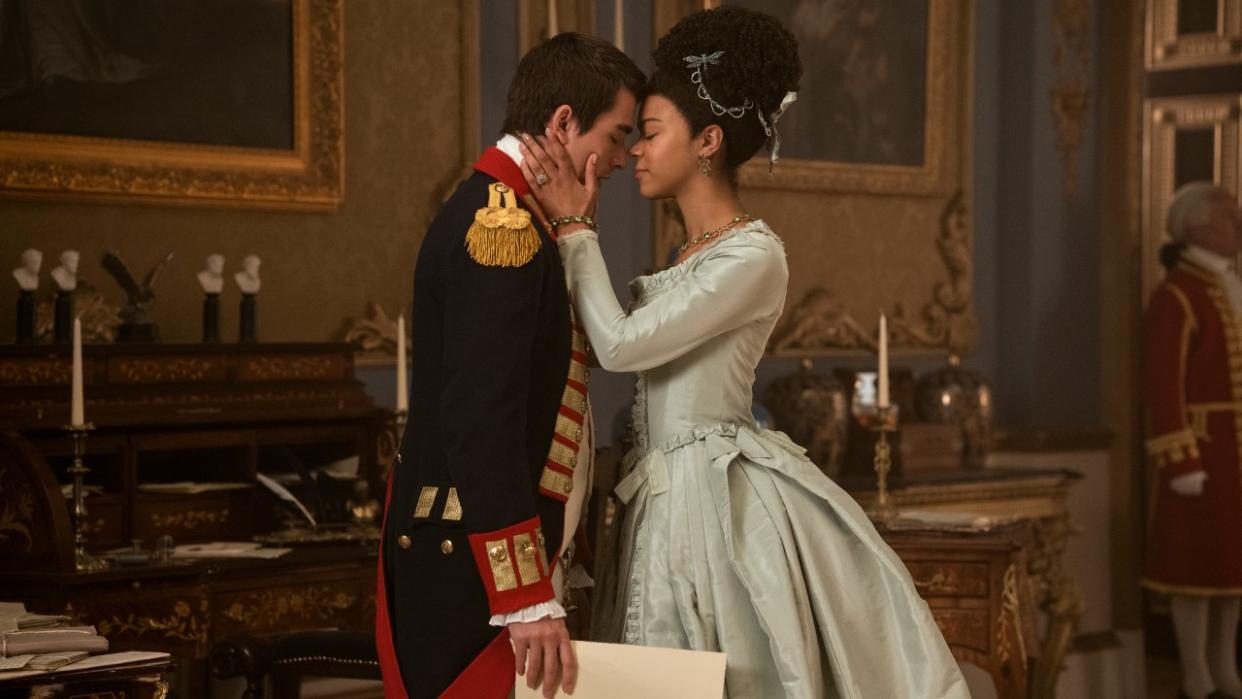
Even though pretty much everyone with a Netflix subscription knows that Bridgerton gave us many of the best Queen Charlotte moments, we got even more in May 2023 when a series focused on the beginning of her romance with King George (aptly titled Queen Charlotte: A Bridgerton Story) hit the streamer. While she was already an incredibly intriguing character for many reasons, viewers now have even more reasons to be interested in the monarch, as well as the other real-life people who are portrayed on the show.
So, if you’ve been wondering about the real Charlotte and others seen in the romantic drama who had actual counterparts in England’s extended royal family, look no further than these 10 facts! And as you might guess, this article mentions plot points from Queen Charlotte, so if you're not caught up on the show, there may be spoilers ahead!

Queen Charlotte Was Descended From A Black Line Of Portuguese Royalty
For many people, one of the major surprises of Bridgerton Season 1 was not only the inclusive casting, but seeing Queen Charlotte portrayed as a Black woman. While the diversity in casting led to some negative critiques, the fact is that Charlotte (born Sophia Charlotte of Mecklenburg-Strelitz on May 19, 1744) was descended from a line of Black Portuguese royalty, according to Frontline.
Her ancestry can be traced back to Martin Alfonso de Sousa Chichorro, who was the illegitimate son of King Alfonso of Portugal and his mistress, a Moor named Oruana/Madragana. It was also found that de Sousa Chichorro’s wife, Ines de Valladares, actually contributed the largest portion of Charlotte’s African Islamic genes.
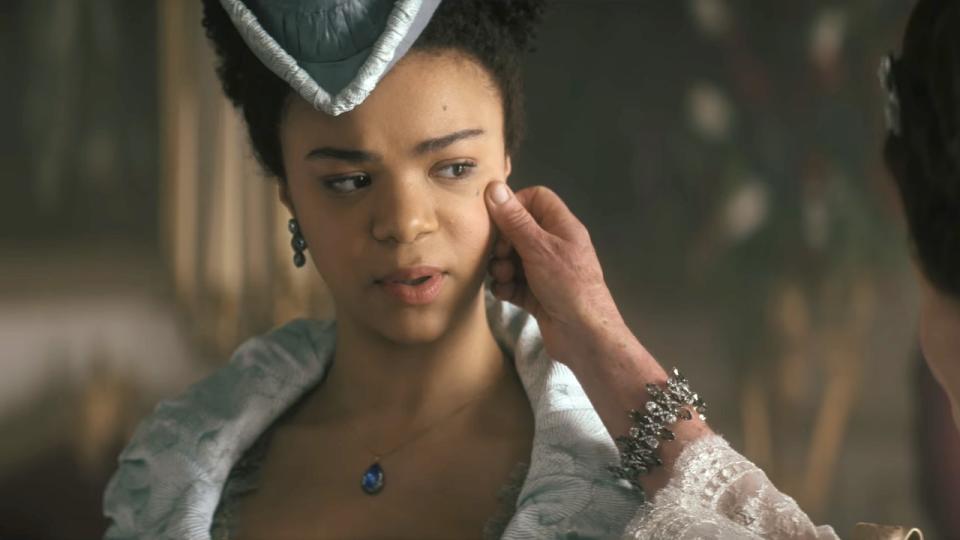
Sir Allan Ramsay Painted Most Of Her Portraits And Left Her African Features Intact
Something that we see in Queen Charlotte is a lot of dubious looks at the young royal when she arrives and those in charge (including her soon-to-be mother-in-law, Princess Augusta, whom we’ll discuss more about in a bit) realize how African she looks. With one scene showing Augusta telling an artist to erase the color from Charlotte’s face in his work.
Frontline also noted that a common request of the time was for portrait artists to “play down, soften or even obliterate features in a subject's face” (especially women) that were thought to go against beauty standards. Well, artist Sir Allan Ramsay painted many of the portraits we have of Charlotte, and he kept her African features intact, which is thought to be due to his anti-slavery stance.

Charlotte Did Marry King George The Same Day They Met
Another thing we witness in the romantic drama is that Charlotte arrived in England and began preparations for her wedding, without ever having met King George. And, this did happen in real life, according to Royal.UK.
As we saw in the show, her brother, Duke Adolf, signed her marriage contract, and she arrived in England from her native Germany on September 8, 1761, after about a month of travel. It was only six hours later that she and George married, making her Queen of England.
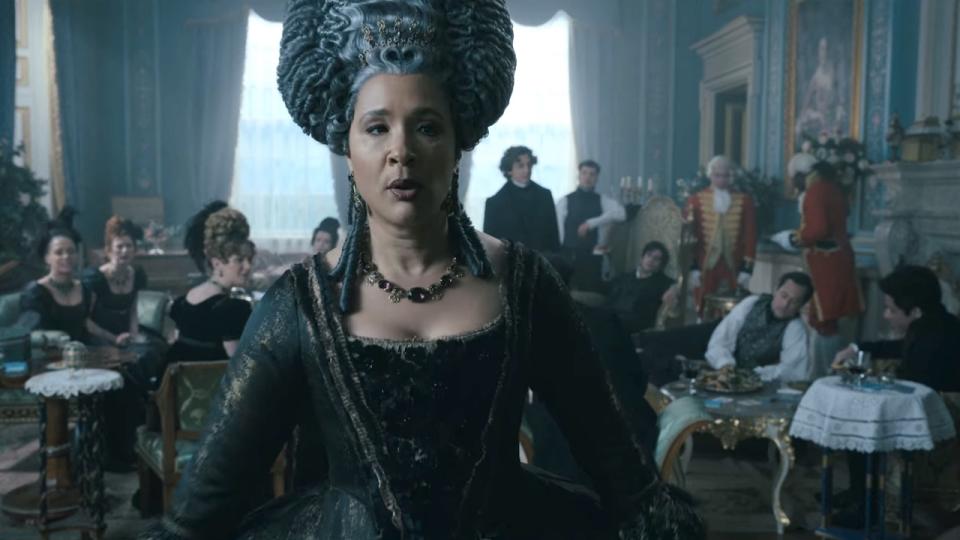
She Really Did Have 15 Kids With King George
The same website’s profile on the ruler also confirms that, like in Queen Charlotte, she did give birth to 15 children, with 13 surviving to adulthood.
If you’ve followed royal families at all, you know how important it generally has been for wives of monarchs to produce at least “an heir and a spare,” because the mortality rates of children were so high. Charlotte definitely fulfilled her duty during her time as the English queen, and got started immediately, giving birth to their first child, George, Prince of Wales (who eventually succeeded his father on the throne as King George IV) on August 12, 1762, less than a year after marrying. She and George then produced heirs until 1783.

Because Of Her Interest In Botany, A Flower Is Named In Her Honor
While she did, indeed, love music as seen on the series, the royal website also tells us that Charlotte was and “amateur botanist” with a particular interest in Kew Gardens. Her love of plant science led to a South African flower, the Bird of Paradise, being given the formal name Strelitzia reginae (with reginae meaning “of the queen,” and Strelitzia being a nod to her homeland, Mecklenburg-Strelitz) to honor her.
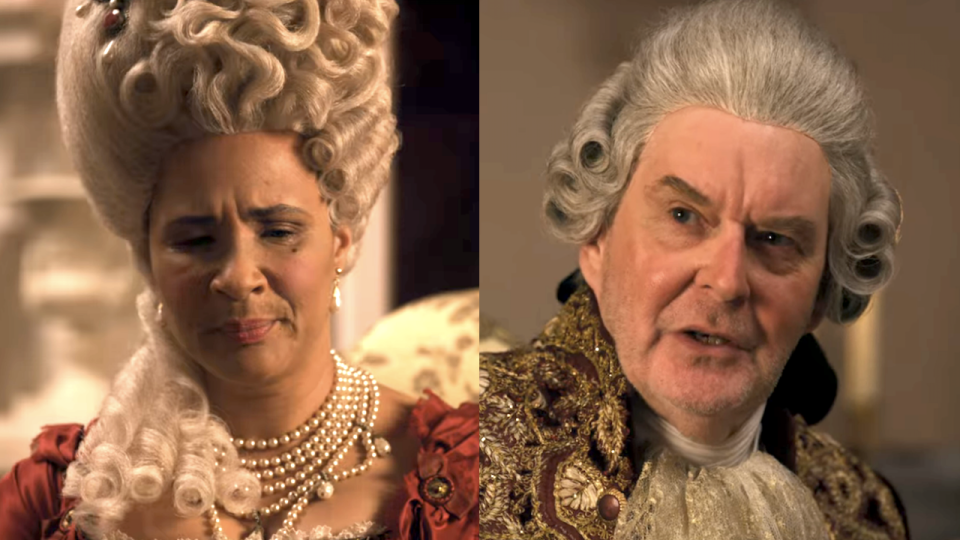
The Queen Was Official Guardian To King George, His Court, And Their Minor Children At The Onset Of His Permanent Illness
Unfortunately, it was very true that the king dealt with increasingly severe health issues as his time ruling England went on, so a plan was put in place in the event that he was no longer able to actually rule or make decisions for himself, his children, and his court. The same royal website tells us that it was in the Regency Bill of 1789, the Prince of Wales was declared Regent if his father became permanently incapacitated, while his mother, Charlotte, was made official guardian to the couple’s minor children, George’s court, and the king himself.
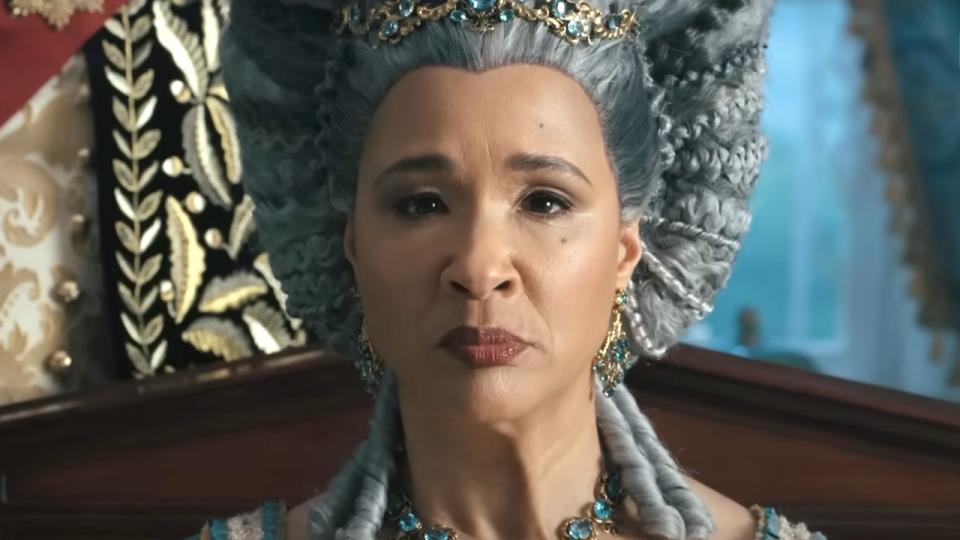
Queen Charlotte Died In 1818 At 74 Years Old
Royal.UK confirms that the queen died after a long reign, at the age of 74 on November 17, 1818. Her oldest son, George (who’d been Prince Regent since 1811) was with her when she passed away in Kew Palace. She preceded the king in death by a little over 14 months, as he died on January 29, 1820.

In 2017, Researchers Determined That King George Likely Had Acute Mania
As we know from watching the Bridgerton franchise show, people of the time, even doctors, didn’t exactly know what to make of King George’s illness, and certainly didn’t know how to treat him. Since his death, many researchers have attempted to piece together his many symptoms and see if there’s solid evidence that points to the cause, and in 2017, a group of scientists and scholars came up with a possible explanation.
After examining 500 of the letters handwritten by the king dated between 1750 and 1810 and looking at his word usage (which they were able to compare to accounts of his health during those specific times) they determined that “the modern classification of mental illness acute mania now appears to be the diagnosis that fits best with the available behavioral data.”
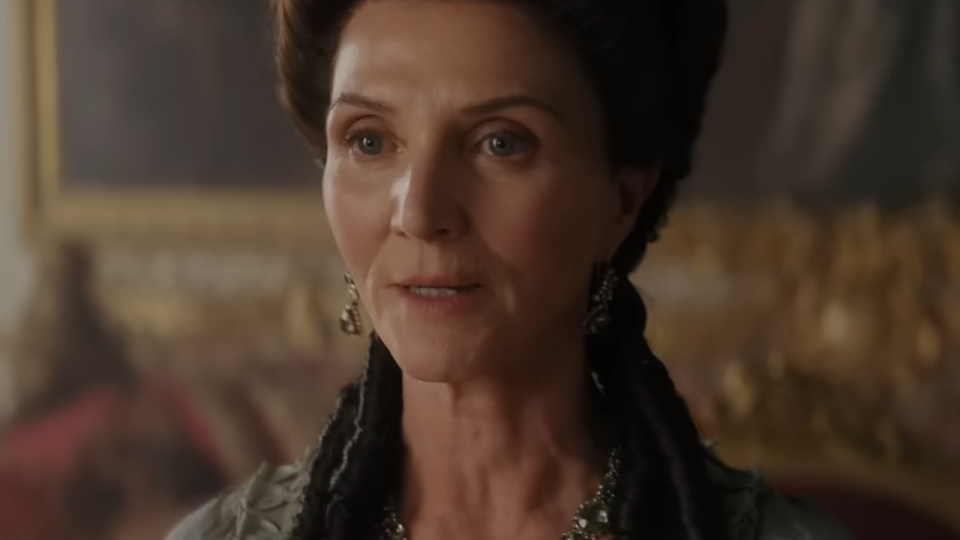
Princess Augusta Did Have To Throw Herself On The Mercy Of George’s Grandfather After Her Husband’s Death
King George’s mother, Princess Augusta, is seen on the drama telling young Lady Danbury about her horrible father-in-law, and English Monarchs confirms that she did have to “throw herself on the mercy” of her husband’s father after her spouse died. Apparently, King George’s parents had a pretty happy marriage, but they both hated his parents, who hated each of them in return.
That life-long animosity was so bad, that the young couple both lied to his parents about the due date of Augusta’s first pregnancy and had her moved during the middle of the night as she was in labor so that his parents wouldn’t be present at the birth. When George’s father died, his grandfather (who was king at the time) didn’t attend the funeral, and it was only Augusta’s pleading for mercy that helped to secure her future and that of her children.
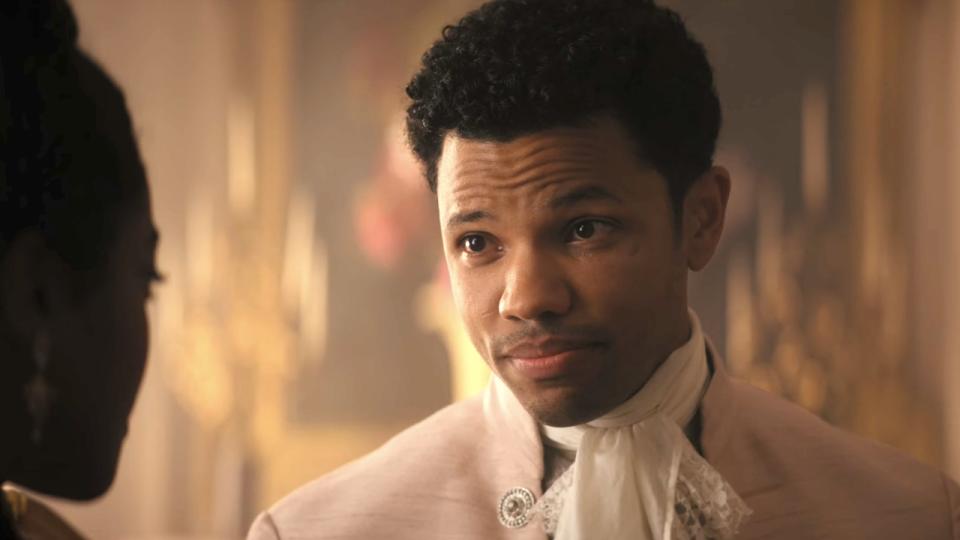
Charlotte’s Eldest Brother, Duke Adolf Freidrich IV Of Mecklenburg-Strelitz, Never Married
Known as Adolphus in the show, Charlotte’s eldest brother actually was Duke of Mecklenburg-Strelitz, meaning that he was leader of the relatively small territory. While the fictional version of the ruler tried to romance (and marry) the recently widowed Lady Danbury, Adolf eventually signed a marriage contract that would have seen him wed Princess Louisa Anne, younger sister to King George, in late 1764.
However the official Mecklenburg-Strelitz biography of him notes that the wedding had to be put off because of Louisa Anne’s declining health. She died in 1769, having never married, and Adolf similarly never wed, either.
Queen Charlotte has been billed as a limited series, but considering how popular it is and how much real history there still is to be mined for the show, it wouldn’t be entirely surprising if we see more at some point in the future.
